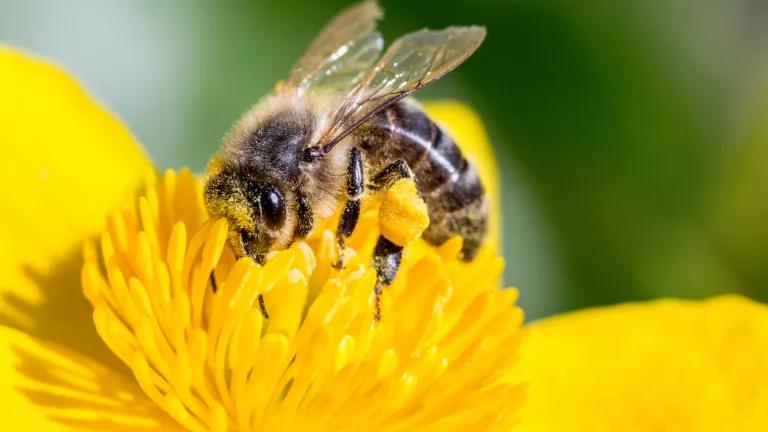
So here’s an all too familiar story—as the rest of the world moves to address a global environmental crisis, the Trump EPA does…nothing. That’s exactly what happened last month when, after Europe and Canada moved to significantly restrict use of bee-toxic neonics, EPA quietly pushed back its timetable for a decision on its own review of the pesticides.
As you’ve probably heard, bees and other pollinators are in trouble—with honeybee populations tumbling for more than a decade and wild pollinators, like monarch butterflies and the now endangered rusty patched bumble bee, flirting with extinction. And that’s bad news not just for pollinators but for our food security, billions of dollars’ worth of economic production in rural communities, and the survival of native plants and wildflowers across the country that depend on our more than 4,000 species of wild bees.
While many factors contribute to the current crisis, the widespread and growing scientific consensus in recent years (including a major study, actually funded by the pesticide industry itself) increasingly points the finger at a long suspected culprit—neonic pesticides. It’s not hard to see why. Neonics, which are among the most toxic insecticides to bees and other insects, are also the most widely used. And because they can remain in the environment for years, they can continue to harm or kill beneficial insects long after they’ve been applied.
By now, most of the world has caught on—with Europe recognizing the clear risks to bees and aquatic insects, and Canada likewise finding many neonic uses endanger pollinators (including, for example, one of the oldest and dirtiest neonics, imidacloprid). More importantly, both have also taken protective action in response to the new science. In the spring, Europe voted to ban outdoor uses of the three major neonics, and Canada’s Pest Management Regulatory Agency or “PMRA” has recommended a similar course of action given the widespread threat they pose to aquatic ecosystems.
In the U.S., EPA has been reviewing the impacts of neonic use on pollinators and the broader environment for the last several years and has already found many neonic uses may be harmful to pollinators, birds, mammals, fish, and other aquatic animals (for NRDC’s comments on the reviews, see here). And while EPA collaborated with Canada’s PMRA for its review, there’s every reason to believe it may chart an opposite course by ignoring its own science. Take for example, EPA’s decision to continue to allow sales of the toxic pesticide chlorpyrifos despite finding that it harmed children’s developing brains—a decision that was recently rejected by the courts.
EPA’s latest delay of its neonic review decisions shortly after Canada moved to restrict neonic use is another concerning sign. The decisions—which could ultimately provide critical life-saving protections for pollinators—were originally slated to be completed this year, but have been pushed back until at least 2019. With more pollinators dying every day and the science on neonics’ environmental harms already clear, the time for waiting is over—EPA must act to protect pollinators from neonics before it’s too late.


